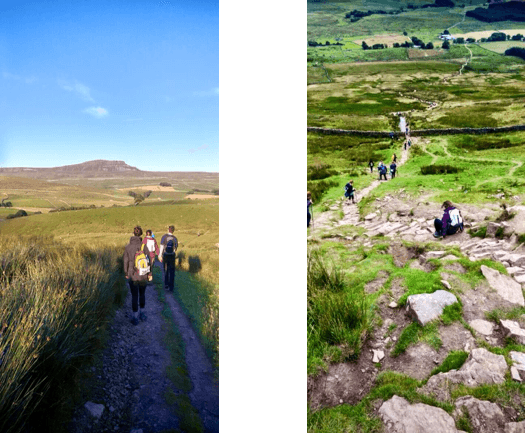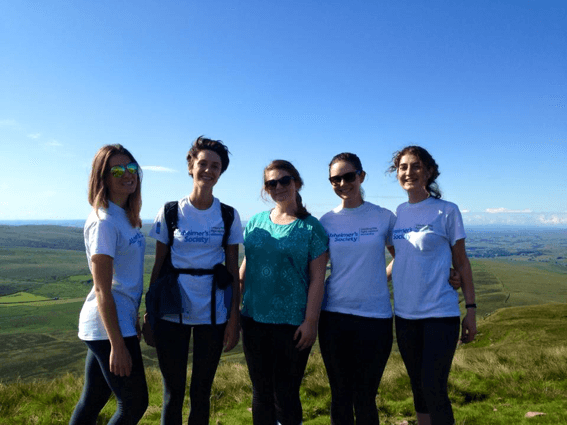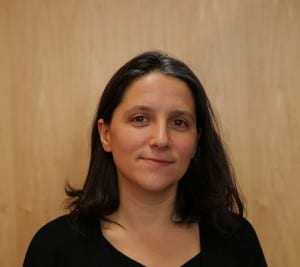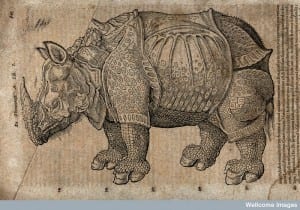Student entrepreneurs create Houndly: the UCL event app
By Jake Fairnie, on 23 November 2015

Have you ever missed a lecture, workshop or seminar you really wanted to attend? Perhaps you’ve been wandering around UCL glued to your phone, desperately trying to google the location of an event. If so, a group of UCL students have created Houndly – an events app that could mean you never have to miss another event on campus… including Division of Psychiatry events! Read more here or visit www.houndly.co.
Parents and Carers Together (PACT) Network Event: Caring for ageing parents (a personal perspective)
By rmjlsfd, on 18 November 2015
Thursday 26th November, 12.30pm to 2pm
Chadwick Building, room G07
Professor Anthony Finkelstein, Dean of the Faculty of Engineering Sciences, will be talking about the challenges of caring for ageing parents and balancing work with caring responsibilities. There will be an opportunity afterwards for Q&A and networking. Light refreshments will be provided but attendees should also feel free to bring lunch.
More information on this event can be found on the UCL staff webpages (http://tinyurl.com/owos823)
PACT is a social network that aims to support UCL staff members who are balancing ongoing caring responsibilities with work. More information and contact details can be found on the UCL equalities webpages http://www.ucl.ac.uk/hr/equalities/gender/pact.php.
Congratulations to Michael Bloomfield on winning the award for core psychiatric trainee of 2015
By Jake Fairnie, on 16 November 2015
Announcement made at the Royal College of Psychiatrists Award ceremony
 Dr Michael Bloomfield is an Academic Clinical Fellow at the Medical Research Council and University College London. In 2014 he completed his PhD thesis and passed his MRCPsych examination. He published six papers. He won several awards, including the British Association of Psychopharmacology’s Junior Clinical Psychopharmacologist prize. A lecture of his was viewed over 11,000 times on YouTube. He has contributed to BBC Radio 4’s Today programme as well as a number of broadsheets on topics related to Psychiatry.
Dr Michael Bloomfield is an Academic Clinical Fellow at the Medical Research Council and University College London. In 2014 he completed his PhD thesis and passed his MRCPsych examination. He published six papers. He won several awards, including the British Association of Psychopharmacology’s Junior Clinical Psychopharmacologist prize. A lecture of his was viewed over 11,000 times on YouTube. He has contributed to BBC Radio 4’s Today programme as well as a number of broadsheets on topics related to Psychiatry.
The judges said: “We were incredibly impressed by what Dr Bloomfield achieved in a year. He clearly has a bright future ahead of him and we are delighted he has chosen to specialise in Psychiatry.”
Fundraising in the Division of Psychiatry
By rejusro, on 4 November 2015
 Three months ago, five researchers woke up at 4am to walk 26 miles and climb three mountains in just 12 hours. Why? I asked myself the same question clambering up towards the third summit.
Three months ago, five researchers woke up at 4am to walk 26 miles and climb three mountains in just 12 hours. Why? I asked myself the same question clambering up towards the third summit.
As Research Assistants on the MARQUE project, we had decided to try and do more to support dementia research by fundraising for the Alzheimer’s Society.
MARQUE is not funded by the Alzheimer’s Society, it is funded by the NIHR and the ESRC, but we wanted to fundraise for them for a number of reasons. The Alzheimer’s Society is the UK’s leading  dementia support and research charity and we have benefitted from their existence in a number of ways. The Alzheimer’s Society support MARQUE by running our community of interest meetings and attending the steering groups and managers groups.
dementia support and research charity and we have benefitted from their existence in a number of ways. The Alzheimer’s Society support MARQUE by running our community of interest meetings and attending the steering groups and managers groups.
Throughout the project, they have always been there to provide us with valuable PPI input. As Research Assistants, we have always been able to reach and gain insights from their ever-helpful research engagement manager. As researchers, we have enjoyed attending their annual research conference as part of a diverse and inclusive audience. Here, we can talk with people affected by dementia as well as other researchers looking into the care, cure and prevention of dementia. In our day to day work, we rely on being able to refer our participants to the dementia helpline following potentially distressing discussions about quality of life.
For these reasons, we travelled to the Yorkshire Dales to climb Pen-y-Ghent (694m), Whernside (736m) and Ingleborough (723m) on, allegedly, the only sunny day in Yorkshire in 2015.
The journey itself was complete with equal measures of hilarity and misery. We arrived late due to a necessary detour off the motorway to get a cooked breakfast and coffee. This presented two additional challenges. We started roaming behind the main group along grass that we hoped was the “official path” because with a walk that long we couldn’t really afford to take the scenic route. Our late start also meant that we couldn’t afford to really take a break at the top of each peak as we risked not being at the final check point by 4pm and being carted off in the mini bus with those not able to finish…
For the first 10 miles: we walked, we talked, and we laughed. The view was absolutely breath taking (so was the climb) and we were really enjoying the trip out of the congested city of London. I honestly remember, naively, wondering why I didn’t do this every weekend.
As the journey continued and our mobility decreased we gained a new basis for empathy with some of our participants. We ploughed on, however, with an awareness of the investment that kind people had made into the completion of the task.
The final 3 miles were definitely the hardest. We completely lost the ability to talk; which, if you know any of us, you will appreciate is quite out of character. Nevertheless, we continued to drag our heavy, battered limbs through fields lined with pain until we reached the finish line and received our medals. We rewarded our exhaustion with several cups of tea and fish and chips.
The day was a huge success and we managed to raise £1,535 in total for the Alzheimer’s Society! One of the ways we did this was by hosting a bake sale with no fixed prices for cakes. We received amazing support fundraising within our division. We found that people gave generously and we raised £267.55 on just one day within the division. Even Shanlee’s courgette and raisin cakes managed to sell.
I want to say a big thank you to all those who donated and share our story.
I also wanted to acknowledge another fundraising success within the division this year. On the 19th October the CORE team raised £750 for the charity Basmeh & Zeitooneh, a charity committed to serving Syrian refugees in Lebanon and Turkey. Liberty and Monica raised the money in creative and exciting ways. They approached local business for donations to add to a raffle. They also organised a silent auction and approached local colleagues to donate their time and offer experiences. This provided a fabulous auction that included everything from: a day out sailing for two; to hot drinks made by Monica for a week. These events were orchestrated around a highly enjoyable and well attended pub quiz!
I really wanted to write this piece so that we could celebrate these successes and say thank you to everybody that donated. I also want to actively encourage other research teams to do the same.
Fundraising events within the department are a great means to multiple good ends. They can bring research teams together and get people talking across the department – all whilst raising money for really good causes!
I would, therefore, encourage everybody to think about how we could do this more within the department: whether that’s up Pen-y-Ghent or down at the pub.
![]() Written by: Sarah Robertson, PhD Student & Research Assistant on the MARQUE Project
Written by: Sarah Robertson, PhD Student & Research Assistant on the MARQUE Project
Email: sarah.robertson@ucl.ac.uk
Twitter: @1SarahMae
The MARQUE project: Managing Agitation and Raising QUality of lifE in dementia
By rejusro, on 2 November 2015
Progress to Date
Dementia directly affects a bout 820,000 people in the UK with numbers increasing rapidly as the population ages. Our study team has learnt from previous research that agitation is extremely common in people with dementia and causes distress to themselves, family carers and paid carers; incurring significant costs and leading to the break down of relationships.
bout 820,000 people in the UK with numbers increasing rapidly as the population ages. Our study team has learnt from previous research that agitation is extremely common in people with dementia and causes distress to themselves, family carers and paid carers; incurring significant costs and leading to the break down of relationships.
The MARQUE Project is an ongoing five year long study currently taking place all over England, led by our research team at UCL.
MARQUE was funded in response to the government’s “Challenge on Dementia” in 2012(1). Professor Gill Livingston was awarded  over £3 million of funding by the ESRC and NIHR to conduct this study to increase knowledge about dementia, agitation and personhood with the ultimate aim of improving quality of life of people with dementia(2). Agitation has previously always been tackled at an individual level, but in this project, we aim to tackle agitation at an organizational level.
over £3 million of funding by the ESRC and NIHR to conduct this study to increase knowledge about dementia, agitation and personhood with the ultimate aim of improving quality of life of people with dementia(2). Agitation has previously always been tackled at an individual level, but in this project, we aim to tackle agitation at an organizational level.
There are 6 streams of MARQUE. Please see www.ucl.ac.uk/psychiatry/marque for full details of these streams. Below is an update of where we are at.
Stream 1 – Theoretical understanding of personhood and agitation
The conceptual stream of MARQUE is active. Professor Paul Higgs is conducting a theoretical investigation into the concepts of person and personhood and their application to care practises for people with dementia.
Stream 2 – Longitudinal study of agitation, quality of life and coping strategies in care homes.
 This stream has been active since April 2014 when recruitment began.
This stream has been active since April 2014 when recruitment began.
We have made fantastic recruitment progress to date:
We have recruited 97 care home clusters nationally – the map to the right shows the spread of our recruitment nationally.
We currently have 4193 people consented to the study:
- 1649 staff
- 1456 residents
- 1088 relatives
Stream 3 – Development and testing of intervention in care homes
We are in the process of finalising a manual based training programme for care staff to test in a randomised control study with 20 care homes.
The manual has been developed based on the our previous systematic review of non pharmacological interventions in dementia (Livingston et al 2014), the START manual(3) for family carers and has been informed by multiple interviews with care homes staff about the barriers and facilitators of managing agitation in care homes.
We plan to begin piloting the intervention in one care home in January 2016.
Research Assistants are currently being trained to deliver the intervention to start mid 2016.
Stream 4 – Qualitative exploration of agitation and family carers coping at home.
Recruitment is active and 5 family carers have been interviewed so far.
Stream 5 – End of life and agitation: Ethnographic study of people with dementia, families and paid carers.
Recruitment is active and 4 full observations of agitation at the end of life in hospital have been completed so far.
Stream 6 – Pilot intervention at end of life
Stream 6 is planned to start following the completion of stream 5.
Ongoing PhD projects attached to MARQUE:
Quality of life: a comparison of the perspectives of paid staff, family relatives and individual’s with dementia in care homes.
This PhD is embedded into Stream 2 and compares and explores the perspectives of paid staff, family relatives and people with dementia in a care home setting. I am exploring these perspectives qualitatively and quantitatively to build a conceptual model of quality of life in this context. Supervisors: Prof Gill Livingston, Dr Claudia Cooper, Dr Juanita Hoe.
A longitudinal study exploring the prescription and administration of analgesic and psychotropic medication in UK care home residents with dementia
A prospective study embedded into Stream 2 exploring medication use in residents with dementia in UK care homes. The primary objective investigates whether taking a higher dose of analgesic medication means that a resident will receive more or less psychotropic medication. Supervisors: Dr Liz Sampson, Prof Paddy Stone, MCPCRD, and Prof Carmel Hughes, Queen’s University Belfast).
Development of an evidence based intervention to improve agitation for people with dementia in care homes
This PhD is embedded within Stream 3. The PhD will explore and describe: staff understanding of agitation; the barriers and facilitators to psychosocial intervention through staff training; the contributors to “care home culture” and what can facilitate a shift in these factors. This exploratory work will inform the development and piloting of the intervention. Supervisors: Prof Gill Livingston, Dr Claudia Cooper.
Written by Sarah Robertson, PhD Student & Research Assistant on the MARQUE Project.
Email: sarah.robertson@ucl.ac.uk
Twitter: @1SarahMae
References
- https://www.gov.uk/government/publications/prime-ministers-challenge-on-dementia
- https://www.ucl.ac.uk/ion/articles/news/20150223
- http://www.ucl.ac.uk/psychiatry/start/
2nd British Symposium on The History of Neurology and Psychiatry (25th and 26th Nov)
By Jake Fairnie, on 15 September 2015
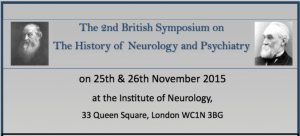 The 2nd British Symposium on The History of Neurology and Psychiatry is on 25th and 26th November
The 2nd British Symposium on The History of Neurology and Psychiatry is on 25th and 26th November
A commemoration of the centenary of the death of Sir William Gowers November 25th. Reviewing Gowers contribution to Neurology. Speakers include: Rebecca and Timothy Gowers, Andrew Lees, Christopher Boes, Michael Hanna, Alastair Compston, Mark Weatherall, John Duncan.
Topics include: The Bethlem Hospital, Insanity, Child and Old Age Psychiatry, Psychotherapy, Neurasthenia, Shellshock, Hysteria, Epilepsy, Movement Disorders, Brain Imaging, The Institute of Neurology and The London Hospital. Speakers will include: Victoria Northwood, Bonnie Evans, Claire Hilton, Simon Shorvon, Niall Quinn, Adrian Thomas, David Bell, Deji Ayonrinde, Jon Stone, Stefanie Linden, Michael Clark, Alastair Compston and Michael Swash.
See www.hnps.co.uk for full programme and registration details. Click here for Flyer.
Interdisciplinary research, volcanoes and a travelling rhinoceros
By rejuhll, on 14 September 2015
Last week, the Division’s Qualitative Researchers Working Group co-hosted the first in a series of seminars on qualitative health research[1]. The theme was “interdisciplinary research” and the context, strangely enough for a division of psychiatry, was volcanoes. During the seminar, Anthropologist, Professor Linda Whiteford, and geoscientist, Professor Graham Tobin, both from the University of South Florida, shared tales of their long-time collaboration in Baños, Ecuador. Beyond jokes that they stood paralysed between Linda’s anthropologically-informed worry about eating local vegetables customarily soaked in water that was likely to carry disease, and Graham’s geoscienfically-informed fears that the volcano could quite literally blow a hole in their research at any moment, their thesis was a serious one: interdisciplinary work offers that which work confined to one or other discipline cannot.

An écorché figure, front view, with left arm extended, showing the bones and the fourth order of muscles, with a grazing rhinoceros in the background. Line engraving by J. Wandelaar, 1742 (Wellcome Library no. 565796i)
Such a view is clearly etched into UCL’s Grand Challenges and underscored in the missions of research councils and an expanding population of interdisciplinary journals. It is seen as the latest iteration of the cutting edge in research planning, altogether more innovative, more relevant and more persuasive. Yet what does it really mean for projects to be interdisciplinary? How should we judge their successes? And how should a dynamic be set that allows each discipline to flourish according to its own terms?
Working across boundaries is by no means something new. A familiar example is that which gave birth to those images we see in textbooks and atlases and pore over in encyclopaedias. Images given in divine splendour towards an ideal type, which might not have followed the rough contours of the natural world yet which survived in the archetypes that became the basis on which the natural world was known. Here, the leaves of trees were cast as pure and unblemished, animals ennobled with human character, and human bodies turned inside out, made free of the sticky fluids that give them their fleshy corporality. Here is where we see draughtsmen working alongside botanists, zoologists, anatomists and surgeons.

An écorché figure, back view, with left arm extended, showing the bones and the fourth order of muscles, with a rhinoceros seen in the background. Line engraving by J. Wandelaar, 1742 (Wellcome Library no. 565802i)
A wonderful example is the Tabulae sceleti et musculorum corporis humani, published in 1747 by the Dutch anatomist Bernhard Siegfried Albinus. As well as giving us some of the most startlingly beautiful images of human anatomy, the Tabulae sceleti promised to rework concepts of the body into a reality hitherto unseen. To render this ambition, Albinus recruited Jan Wandelaar, master painter and engraver, and lover, it turned out, of rhinoceroses. He wrote of their relationship: “And thus [Wandelaar] was instructed, directed, and as entirely ruled by me, as if he was a tool in my hands, and I made the figures myself.”[2] This seems to deny Wandelaar of any agency in the production of the figures. Yet, perhaps it is misleading.
Wandelaar himself suggested that his figures be placed in natural settings “to preserve the proper light of the picture.”[3] He took freedom to embellish his figures, depicting them against grand and glorious backdrops of classical scenes, buildings and the natural world. And in several of the plates appears the bizarre figure of that which had preoccupied his earlier engravings: a rhino. Putting aside any guesswork about narrative, which might take us on a wonderland-like misadventure, here perhaps was a way in which Wandelaar was able to serve himself and popularise his version of a rhino amongst his peers and beyond. It is certainly an image whose legacy remains as amongst the most accurate of early renderings of a rhinoceros, one that broke artists free of a slavish mimicry of Dürer’s (1515) fancifully scaly and armour-plated monster[4].
It has also been noted that the inclusion of the rhino (and other details behind the figures) contributed to the wide circulation and enduring quality of the Albinus atlas.[5] The atlas itself became a material that travelled across disciplines, finding homes in the bookshelves of anatomists and artists alike, and informing the trajectories of fields from human anatomy and surgery to zoology and figurative painting. Is this perhaps a marker of interdisciplinary success: the production of knowledge that can travel across borders and settle in various academic homes? Knowledge that is both difficult to classify in ordinary terms and which can bridge the gaps between silos? And is this something that we should aim for in our collaborations, whether they be between anthropologists and geoscientists, psychiatrists and sociologists, or epidemiologists and qualitative researchers? I’d say, yes to all three, tipping my hat to the travelling rhinoceros…
[1] Seminar series co-hosted with the UCL Department of Applied Health Research and the UCL Health Behaviours Research Centre.
[2] Albinus, Academicarum annotationum, libri I-VIII, lib. 1. Praef quoted in Choulant, L. 1920. History and bibliography of anatomic illustration. Translated and annotated by Mortimer Frank. Chicago: University of Chicago Press, p.277.
[3] Albinus, Academicarum annotationum, libri I-VIII, lib. 1. Quoted in Choulant, L. 1920. History and bibliography of anatomic illustration. Translated and annotated by Mortimer Frank. Chicago: University of Chicago Press, p.17.
[4] Ross MacFarlane. Object of the month: Human skeleton and young rhinoceros. 2011. Available at: http://blog.wellcomelibrary.org/2011/08/object-of-the-month-august-2011-jan-wandelaar-human-skeleton-and-young-rhinoceros/
[5] Linda Wilson-Pauwels. 2009. Jan Wandelaar, Bernard Siegfried Albinus and an Indian Rhinoceros Named Clara Set High Standards as the Process of Anatomical Illustration Entered a New Phase of Precision, Artistic Beauty, and Marketing in the 18th Century. Journal of Biocommunications, 35(1), 10-17.
Congratulations Dr Álvaro Díez Revuelta who has been awarded the ‘Juan de la Cierva’ postdoctoral fellowship
By Jake Fairnie, on 9 September 2015
 Congratulations Dr Álvaro Díez Revuelta who has been awarded the prestigious ‘Juan de la Cierva’ postdoctoral fellowship under the Spanish National Research programme. Well done Álvaro! After more than two years working at the Division of Psychiatry, next October he will change UCL for the Complutense University of Madrid, and will be placed at the Centre for Biomedical Technology, Laboratory of Cognitive and Computational Neuroscience in the Spanish capital. With this new position, Álvaro will continue his research in brain activity disorganization in patients with psychosis, expanding his expertise to magnetoencephalography techniques. Álvaro will be hugely missed by the Division, but fortunately his new project will allow him to continue to collaborate with Dr Elvira Bramon, so we hope to still see him regularly in London. Álvaro, we wish you the very best of luck!
Congratulations Dr Álvaro Díez Revuelta who has been awarded the prestigious ‘Juan de la Cierva’ postdoctoral fellowship under the Spanish National Research programme. Well done Álvaro! After more than two years working at the Division of Psychiatry, next October he will change UCL for the Complutense University of Madrid, and will be placed at the Centre for Biomedical Technology, Laboratory of Cognitive and Computational Neuroscience in the Spanish capital. With this new position, Álvaro will continue his research in brain activity disorganization in patients with psychosis, expanding his expertise to magnetoencephalography techniques. Álvaro will be hugely missed by the Division, but fortunately his new project will allow him to continue to collaborate with Dr Elvira Bramon, so we hope to still see him regularly in London. Álvaro, we wish you the very best of luck!
Concern over psychotropic drug prescribing in people with intellectual disability
By rejutal, on 8 September 2015

A study led by Dr Rory Sheehan, a psychiatrist and academic research fellow, has found a significant number of people with intellectual disabilities might be inappropriately prescribed psychotropic drugs. In particular, the number of people prescribed antipsychotics substantiallyoutweighs the number of diagnoses of severe mental illness in this population. Use of antipsychotics for other presentations, such as challenging behaviour, may be a factor, but the authors suggest that further work is needed to establish why this is the case and to optimise psychotropic prescribing. Dr Sheehan’s article in the BMJ (http://www.bmj.com/content/351/bmj.h4326) has received a lot of media coverage and has drawn attention to the disparity between rates of psychotropic prescription and recorded mental illness in people with intellectual disability. You can read a summary of the research on NHS Choices:http://www.nhs.uk/news/2015/09September/Pages/scale-of-antipsychotic-chemical-cosh-use-explored.aspx
SSBP 2015 – Behavioural phenotypes from the bench to bedside: translation of basic science to clinical practice
By rejutal, on 8 September 2015
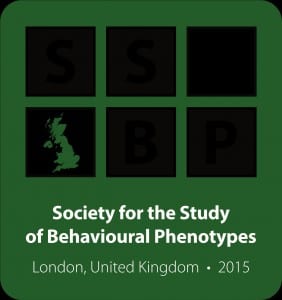 Last week UCL held the SSBP annual meeting, co-hosted by Dr Andre Strydom. The meeting was very successful and comprised an education day and two days of research presentations. You can find out more about the conference and the Society here: http://www.ssbpconference.org/index.html
Last week UCL held the SSBP annual meeting, co-hosted by Dr Andre Strydom. The meeting was very successful and comprised an education day and two days of research presentations. You can find out more about the conference and the Society here: http://www.ssbpconference.org/index.html
Next year the meeting will be in Siena, Italy – we hope to see some of you there!
 Close
Close


